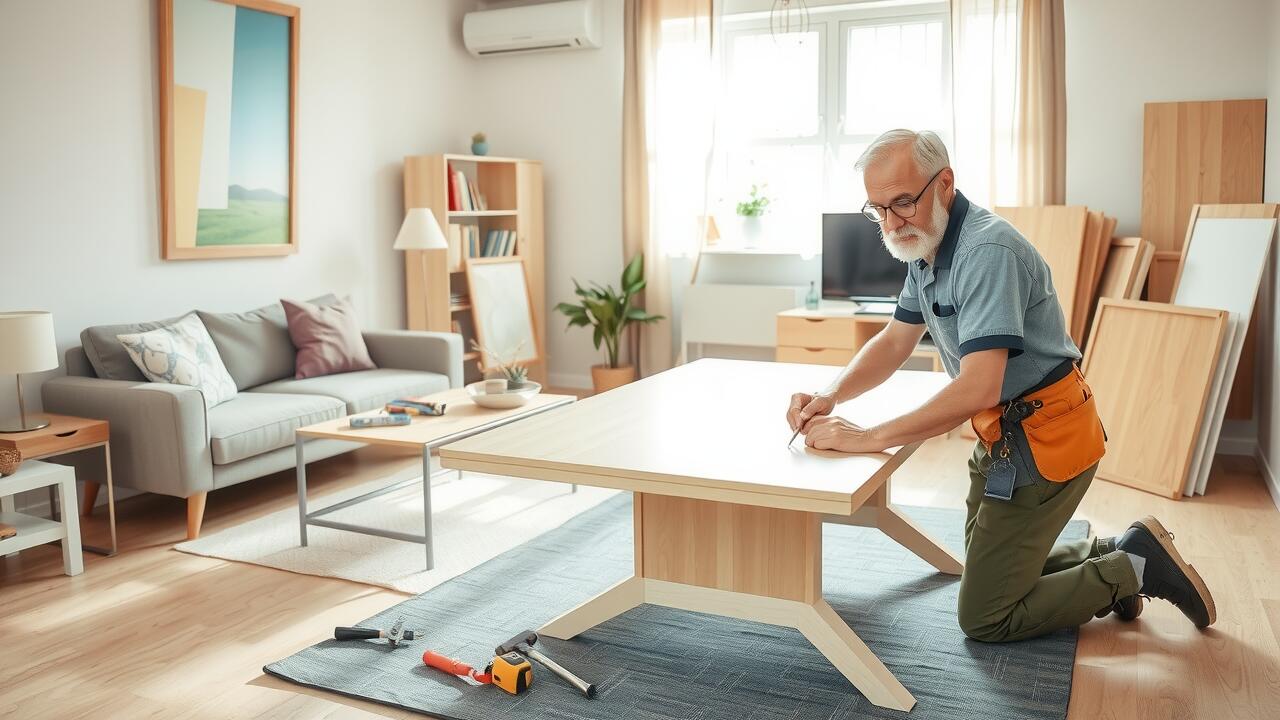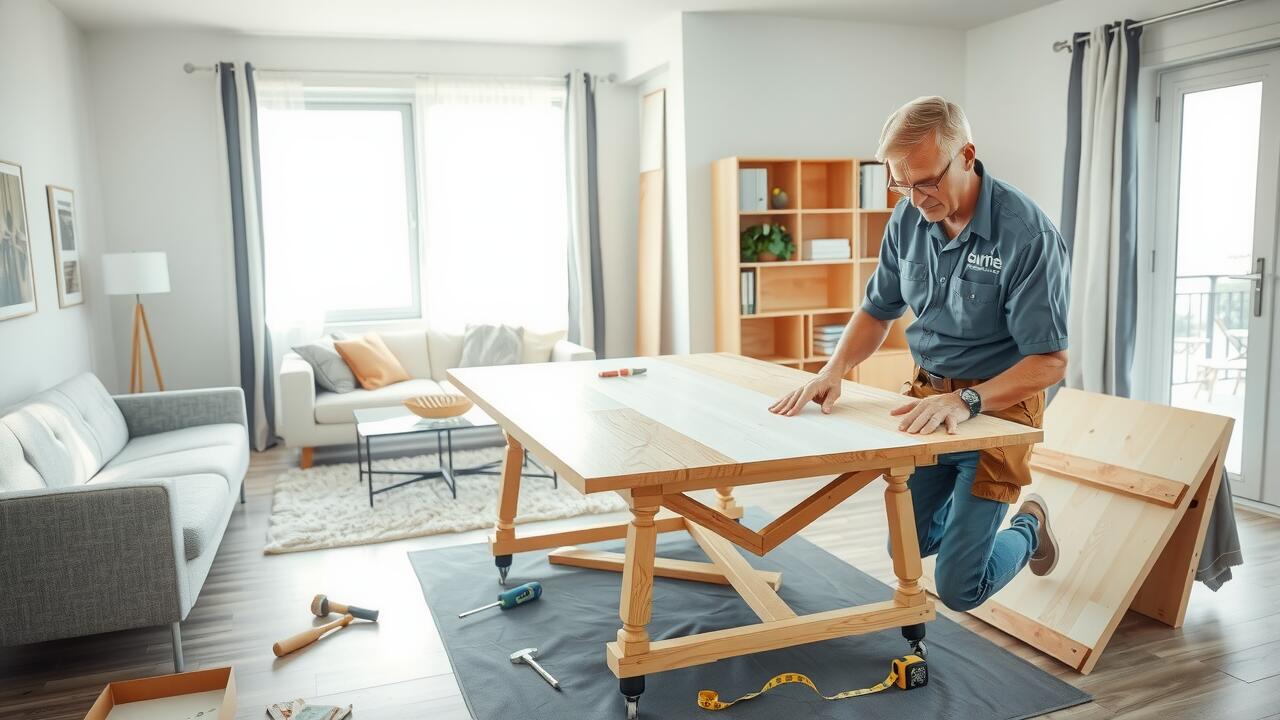
Table Of Contents
Taking Your Time
Rushing can lead to mistakes that cause frustration and damage during furniture assembly and disassembly. Taking your time helps ensure that each piece fits correctly and functions as intended. Thoroughly reading instructions before you begin provides clarity. It eliminates the potential for confusion and incorrect assembly, resulting in a more successful and satisfying outcome.
In areas like Silver Spring, Maryland, many residents face unique challenges related to space and accessibility. Patience in moving and assembling furniture can make a significant difference in these environments. Properly planning each step, such as checking for tools and required parts before starting, will create a smoother experience. By dedicating time to these tasks, you can avoid unnecessary stress and contribute to a more enjoyable home setup.
Avoiding Rushing Through the Process
Rushing through furniture assembly and disassembly can lead to frustration and mistakes. Taking the time to carefully read instructions ensures a clearer understanding of the steps involved. Steps may seem straightforward, but skipping details can cause errors that impact the final result. When handling complex pieces, patience allows for a more thorough approach, minimizing the risk of damaging any components.
Being mindful of the process can save both time and energy in the long run. Engaging in Furniture Assembly and Disassembly in Silver Spring, Maryland requires focus and precision. The task may seem tedious, yet treating it as an opportunity for creativity and organization makes it more enjoyable. Setting aside adequate time prevents the pitfalls that come with haste, ensuring that furniture is not only assembled correctly but also built to last.
Labeling Components
Labeling components during the assembly or disassembly of furniture can make a significant difference in the process's smoothness. By clearly marking each part with simple tags or stickers, you can save time and frustration when looking for specific pieces later. This practice is especially beneficial for larger projects where numerous components are involved. For anyone engaged in furniture assembly and disassembly in Silver Spring, Maryland, taking a few moments to create a labeling system can pay off by streamlining the entire process.
Keeping track of small parts is crucial in avoiding misplacement or confusion. Use small containers or zip-lock bags to separate screws, washers, and connectors, attaching a labeled note to each bag. This organization not only helps during reassembly but also minimizes the risk of losing essential components. In bustling environments like Silver Spring, Maryland, where many people may be managing multiple projects, efficiently labeled components can significantly enhance productivity and contribute to a more efficient workspace.
Keeping Track of Small Parts
Keeping track of small parts during the assembly and disassembly of furniture can save a significant amount of time and frustration. One effective method is to use small containers or bags to group similar items together, such as screws, washers, and dowels. Labeling these containers makes it easy to find the right pieces when you need them. For those engaged in Furniture Assembly and Disassembly in Silver Spring, Maryland, maintaining organization can be a game changer.
Additionally, creating an inventory list of all components can further enhance your efficiency. This list serves as a reference, ensuring no parts go missing. As you take apart or put together furniture, marking off items on your list can give you peace of mind. Such attention to detail is especially helpful in avoiding the common pitfall of losing essential parts amidst the chaos of assembly work.
Disassembling with Care
Disassembling furniture requires attention to detail to prevent damage to both the items being taken apart and the environment around them. Before starting, ensure you have the appropriate tools at hand. Properly loosening screws and bolts can minimize the risk of stripping or breaking them. When working in tight spaces, take extra care to maneuver pieces gently. Being methodical and patient is essential; rushing can lead to mishaps that disrupt the entire process.
Furniture Assembly and Disassembly in Silver Spring, Maryland offers an opportunity to learn best practices for tackling this task effectively. Use protective blankets or pads to safeguard against scratches on floors or walls. When separating components, keep them together in a designated area, maintaining their integrity. Documenting how pieces fit together can also serve as a useful reference for future reassembly, ensuring a smooth experience down the line.
Methods to Prevent Damage
When tackling furniture assembly and disassembly in Silver Spring, Maryland, it's essential to approach the process with a careful mindset. Different materials and constructions can make furniture susceptible to damage if not handled correctly. Begin by using appropriate tools designed for the specific type of assembly, ensuring each piece is treated gently. Keeping a soft cloth handy helps protect surfaces from scratches during assembly or disassembly.
Taking sufficient precautions during disassembly can prevent unintended damage. For example, removing screws and bolts slowly prevents the risk of stripping threads. If parts fit together snugly, using pliers with a protective coating can maintain grip without marking the surface. Always pay attention to any staples or nails that may be concealed, as pulling them out carelessly can lead to splits or tears in the material.
FAQS
Why is it important to take my time during furniture assembly and disassembly?
Taking your time helps ensure that you understand each step, reduces the risk of making mistakes, and minimizes potential damage to the furniture.
What are some effective ways to keep track of small parts during assembly?
Labeling components, using small containers or zip-lock bags for screws and fasteners, and keeping all parts in a designated area can help you stay organized.
How can I disassemble furniture without causing damage?
To prevent damage, use the appropriate tools, follow the manufacturer’s instructions carefully, and take a methodical approach, removing parts in the reverse order of assembly.
What should I do if I lose a small part while assembling or disassembling furniture?
Check the area where you were working thoroughly, and if you still can’t find it, consider sourcing a replacement part from the manufacturer or a hardware store.
Are there any specific tools I should have on hand for furniture assembly and disassembly?
Yes, having a basic toolkit with a screwdriver set, an Allen wrench, pliers, and a hammer can make the process easier and help avoid damage to the furniture.
